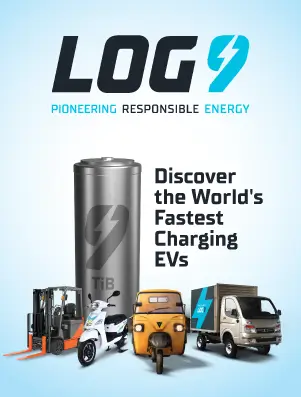
Electric Vehicles: A Magnetic Odyssey from Spark to Street
November 22nd, 2023 | Reading Time 4 mins
Peel back the layers of the magnetic ballet powering electric vehicles, orchestrated by the inverter and sustained by eco-friendly technology
Have you ever imagined a world where cars dance to the rhythm of magnets rather than the roar of engines?
For decades, the internal combustion engine has dominated the transportation landscape. But a silent revolution is underway, driven by the magnetic magic of electric vehicles (EVs). Unlike gasoline cars that rely on explosions, EVs tap into the fundamental force of magnetism to propel themselves forward. Imagine a world where cars dance to the rhythm of magnets, not the roar of engines. Join us on a journey to explore the fascinating world of electric vehicles and discover their potential to redefine transportation for a brighter tomorrow.
Magnetic Ballet: The Heart of Electric Cars
In 1834, long before gasoline engines became commonplace, a Dutch professor named Sibrandus Stratingh built the first electric car. While limited by its non-rechargeable battery, Stratingh’s invention laid the foundation for the future of sustainable mobility.
But how do these modern marvels actually work? The secret lies in the magnetic ballet that takes place within the electric motor. Think of two magnets facing each other. When like poles are near, they repel each other. But flip one magnet, and they instantly attract, pulling each other together. This basic principle of attraction and repulsion forms the core of electric car technology.
Inside the electric motor, magnets dance in a carefully choreographed sequence. The inverter, acting as the maestro of this ballet, controls the flow of electricity, causing the magnets to flip and rotate. This continuous rotation generates the torque that propels the car forward, eliminating the need for a complex crankshaft and gearbox found in gasoline engines.
The Inverter: The Conductor of Electric Motion
The inverter plays a crucial role in the electric car’s symphony of motion. This vital component converts the direct current (DC) from the battery into alternating current (AC). Imagine a conductor waving a baton, controlling the flow of electrons and orchestrating the magnetic dance within the motor. By adjusting the frequency and amplitude of the AC current, the inverter allows drivers to precisely control the speed and torque of the vehicle, eliminating the need for cumbersome gearboxes.
Beyond the Engine: The Advantages of Electric Powertrains
Electric powertrains offer several advantages over their gasoline counterparts. Unlike the linear motion of traditional engines, electric motors generate a naturally rotary motion. This eliminates the need for a complex crankshaft, which is often prone to breakdowns. Additionally, the inverter provides precise control over speed and torque, leading to smoother acceleration and more efficient energy usage.
Wireless Charging and Beyond: The Future of Electric Vehicles
The world of EVs is constantly evolving, with exciting advancements emerging on the horizon. Imagine parking your car on a special pad and watching it magically recharge without any cables! This is the promise of wireless charging, a technology that is poised to revolutionize the charging experience.

Furthermore, the integration of autonomous driving capabilities is transforming the future of transportation. Imagine your EV navigating through even the most complex traffic scenarios, ensuring your safety and reducing accidents. As artificial intelligence continues to develop, self-driving electric cars will redefine the way we travel.
Life Cycle of EVs: Beyond the Road
While EVs offer a cleaner alternative to gasoline vehicles, it’s crucial to consider their entire life cycle. Manufacturing and disposing of batteries pose environmental challenges. However, ongoing research focuses on developing recyclable and sustainable battery technologies, minimizing the environmental footprint of EVs.
A Paradigm Shift: Driving Towards a Sustainable Future
The shift towards electric vehicles is not just a trend, but a paradigm shift in our approach to transportation. By embracing this technology, we pave the way for a future where clean and sustainable mobility becomes the norm.
Navigating the Electric Future: A Call to Action
As we navigate the electric future, we must recognize that it’s not just about driving a car; it’s about steering our planet towards a cleaner, greener future. By understanding the magnetic magic of EVs, the power of the inverter, and the benefits of regenerative braking, we can appreciate the innovation behind these vehicles and embrace the revolution that awaits us.


